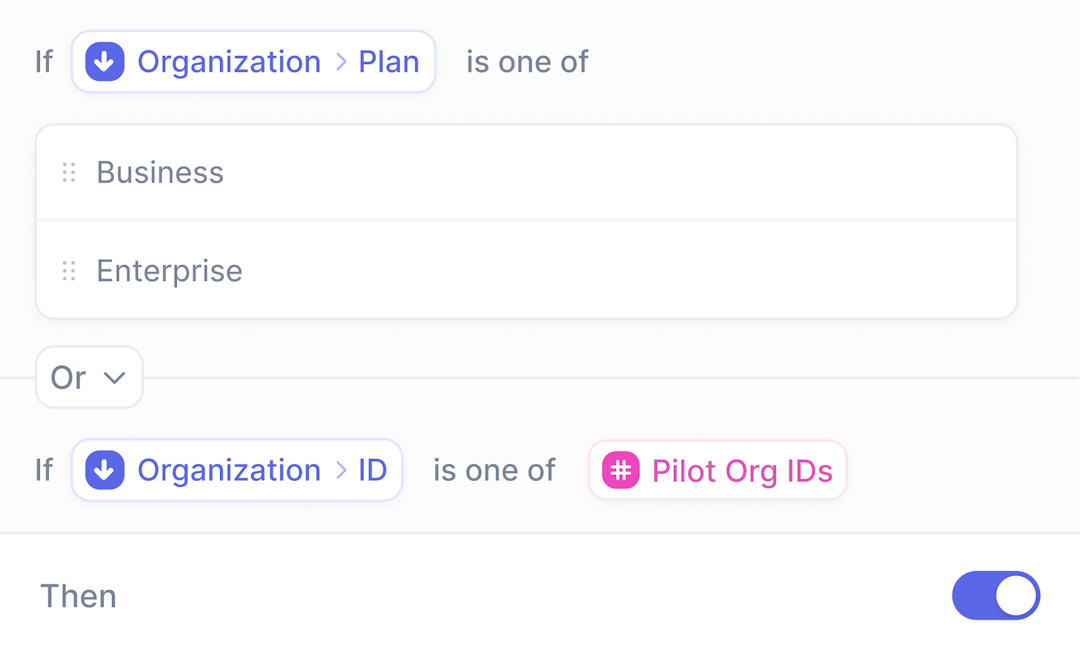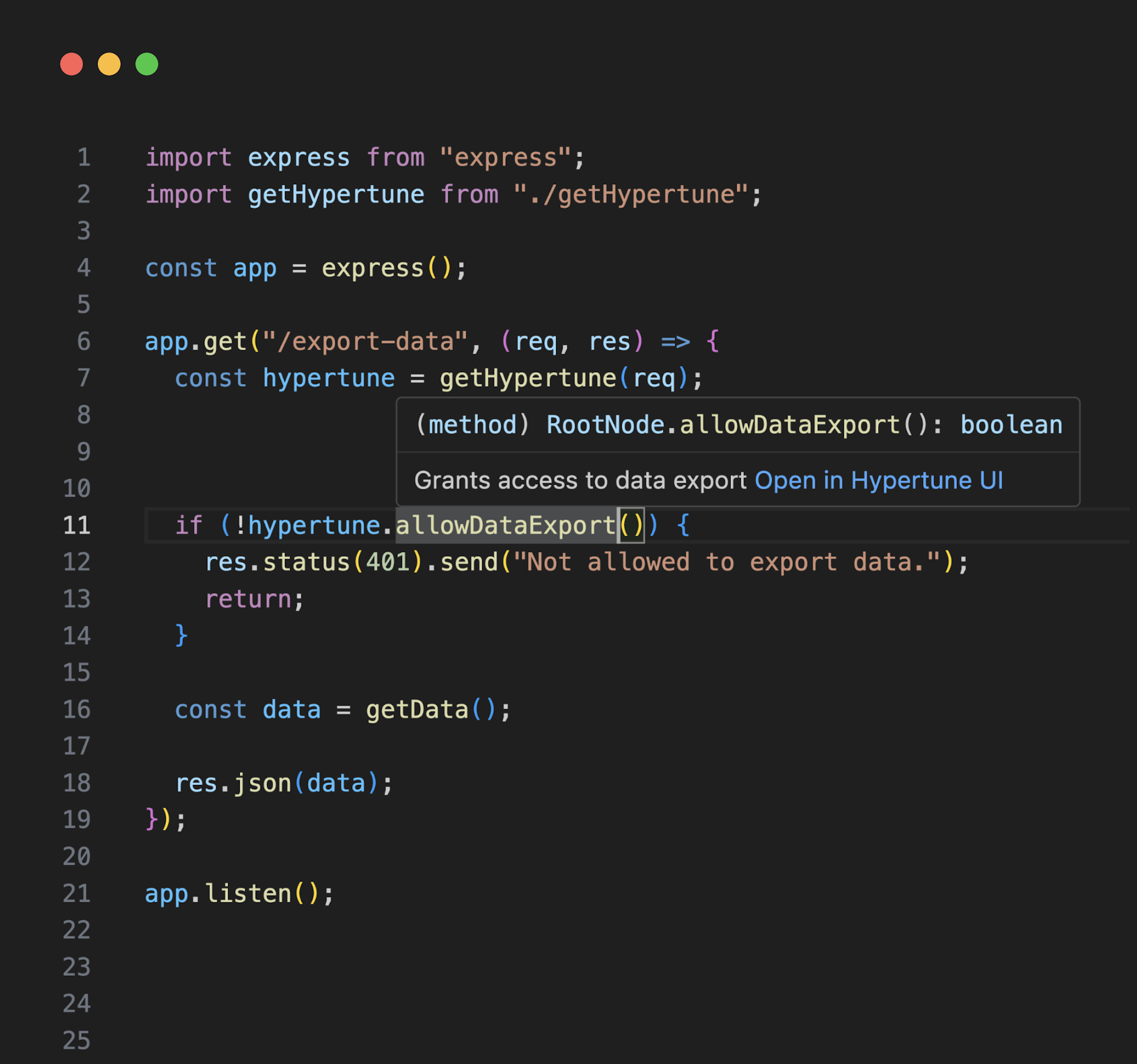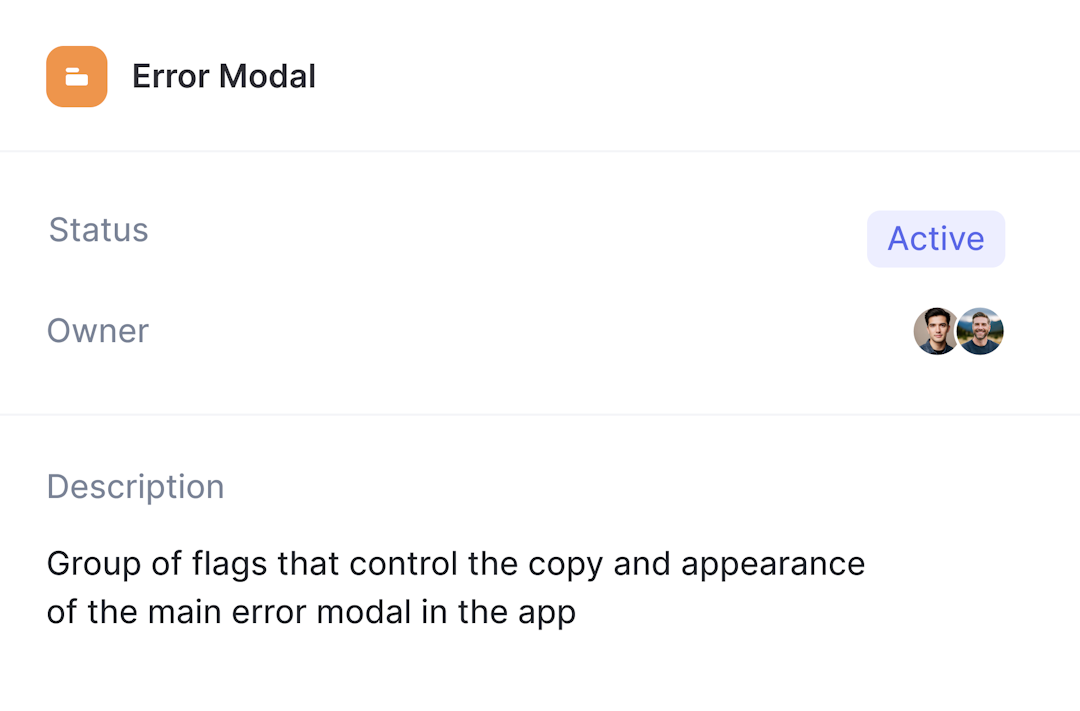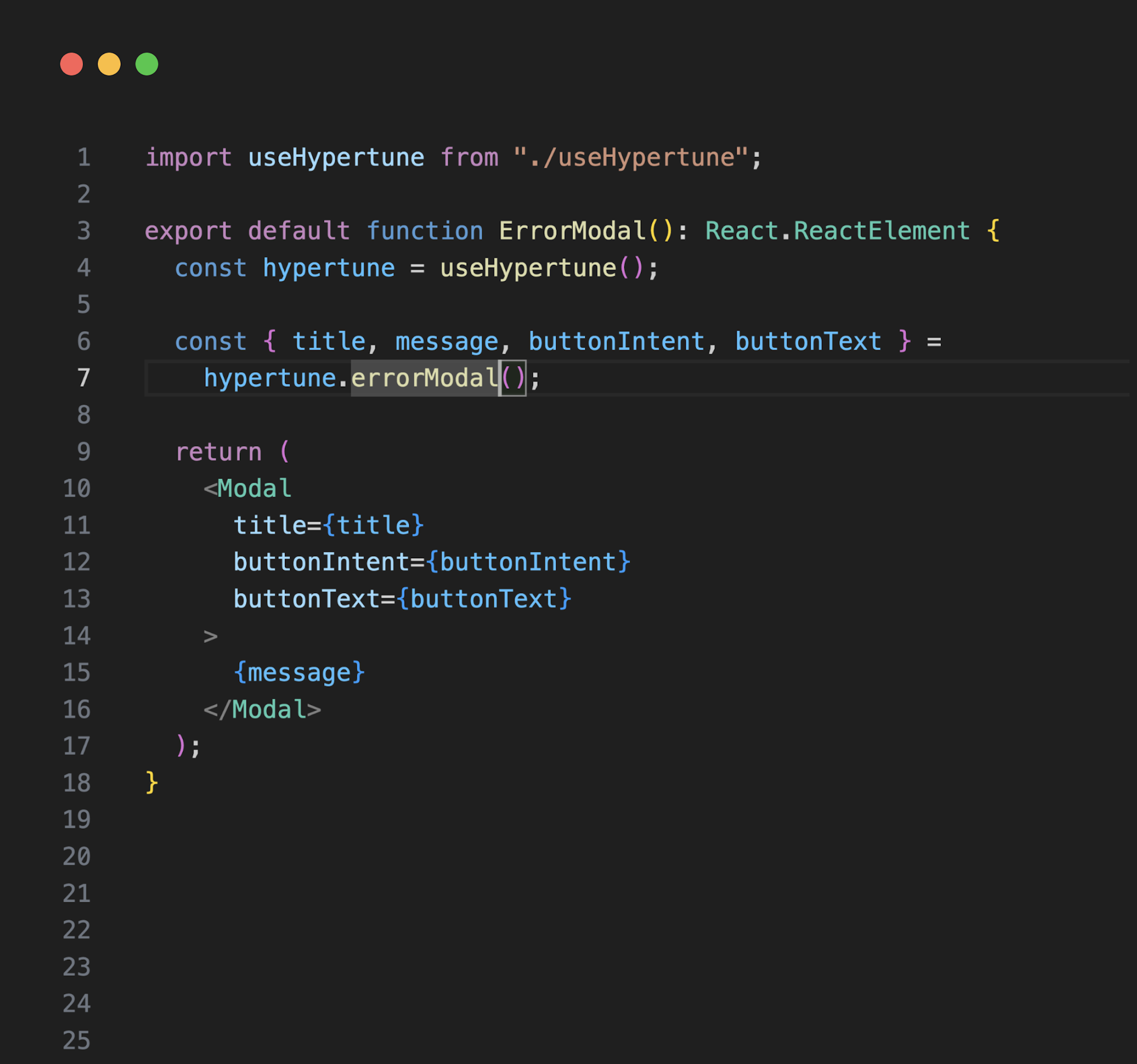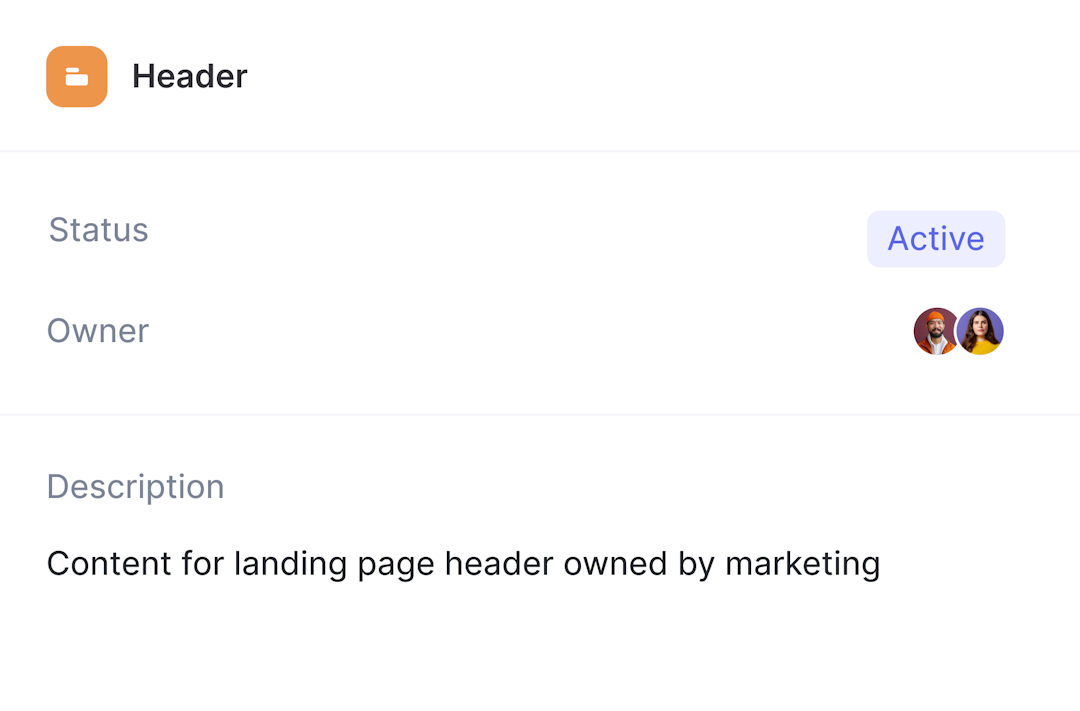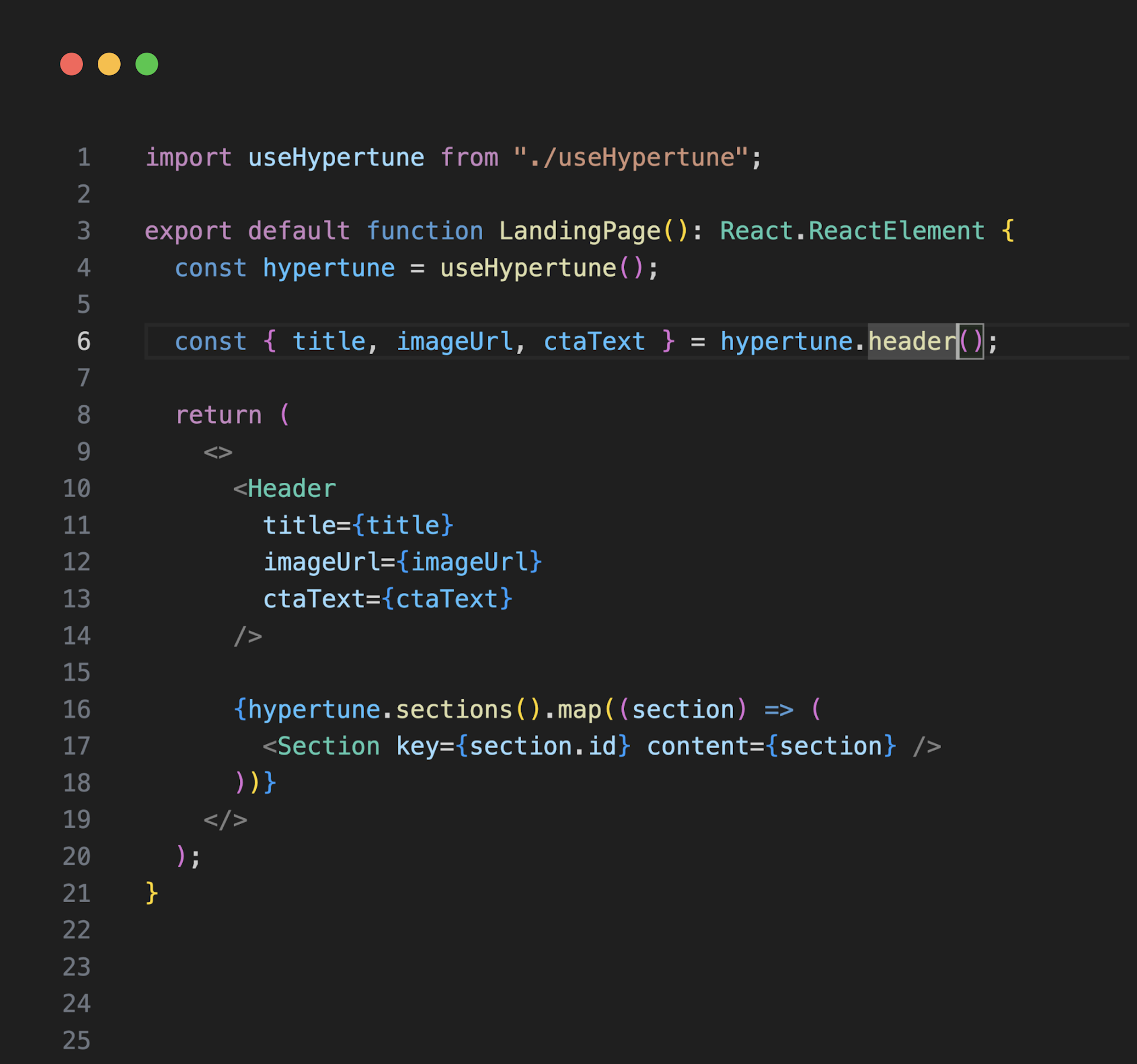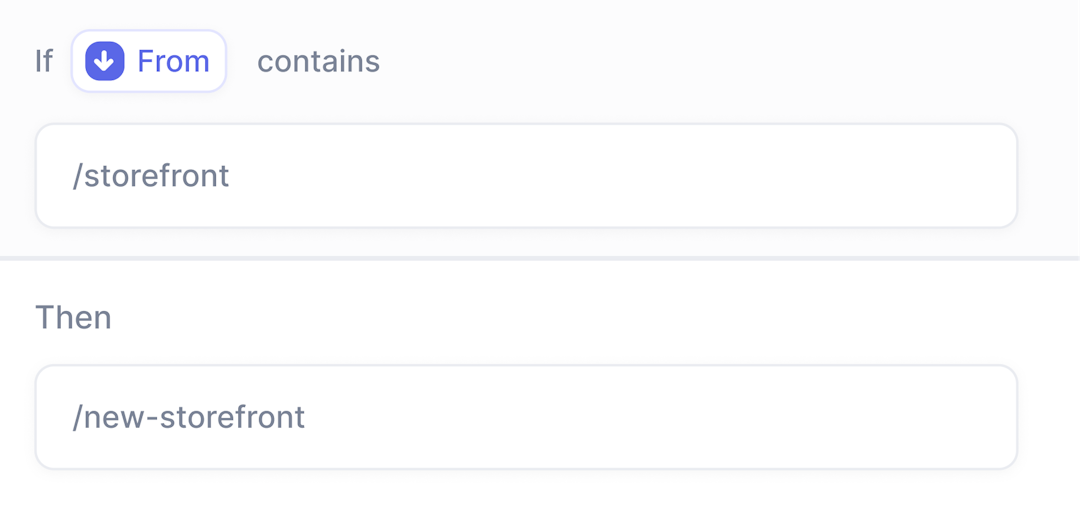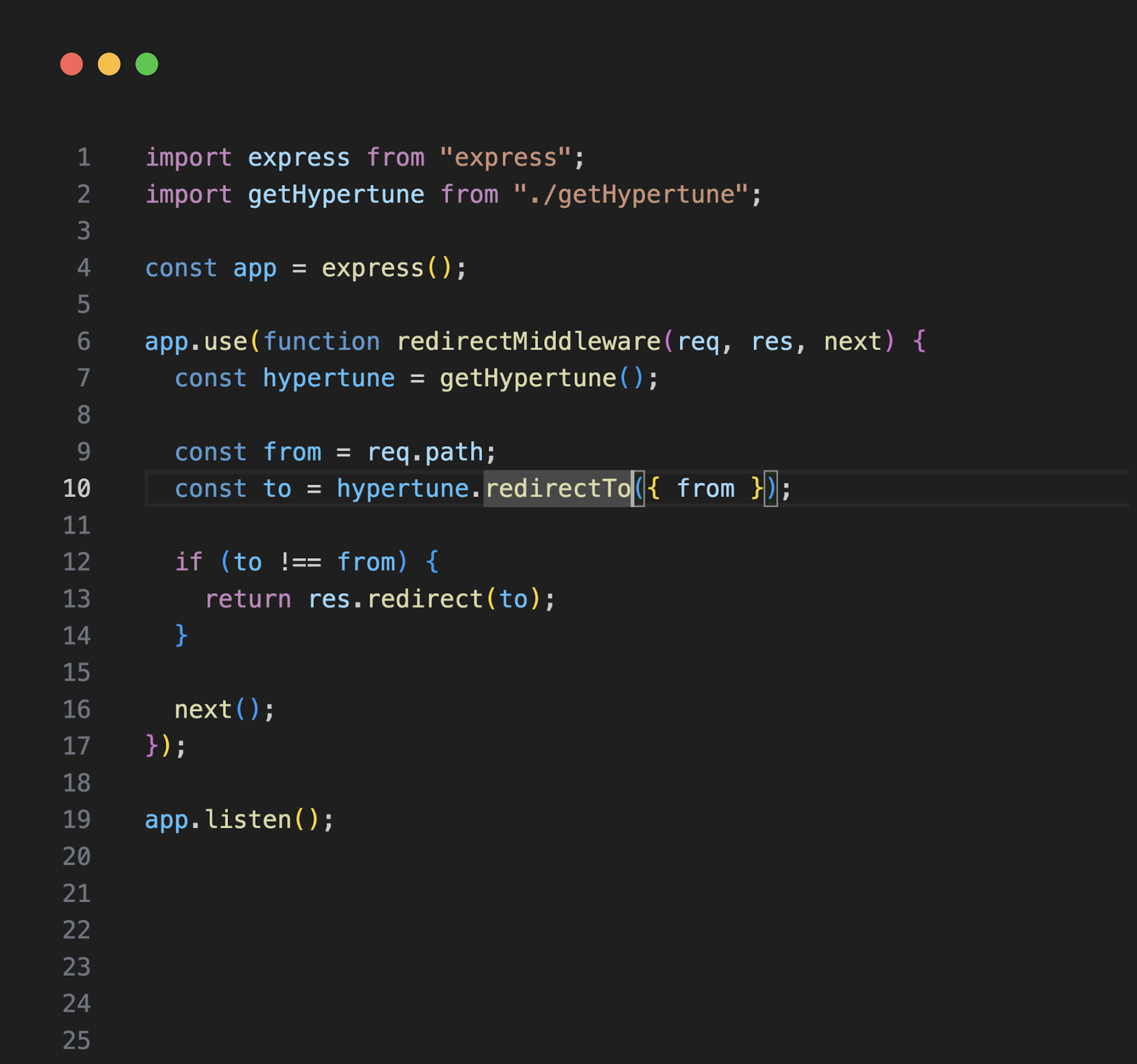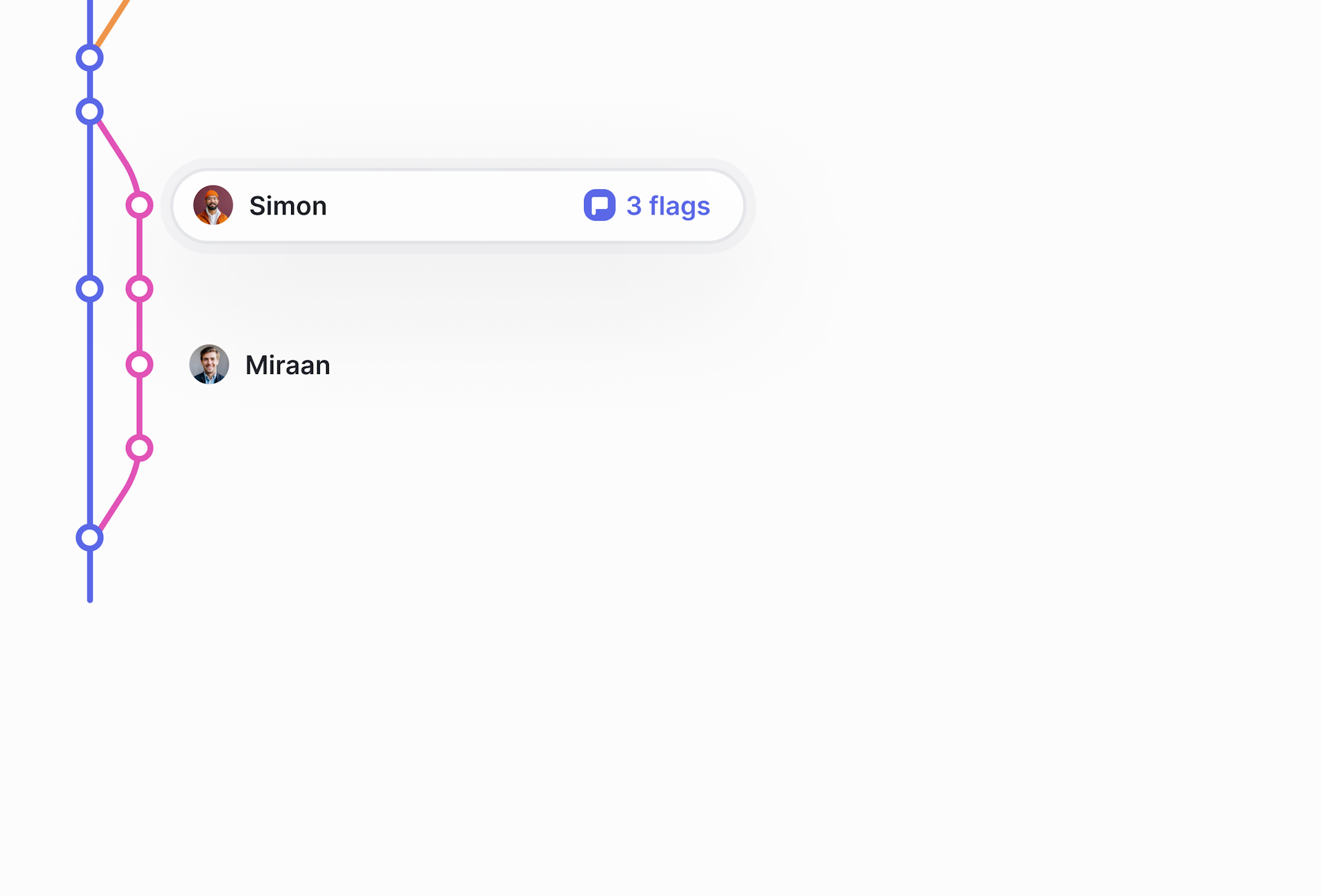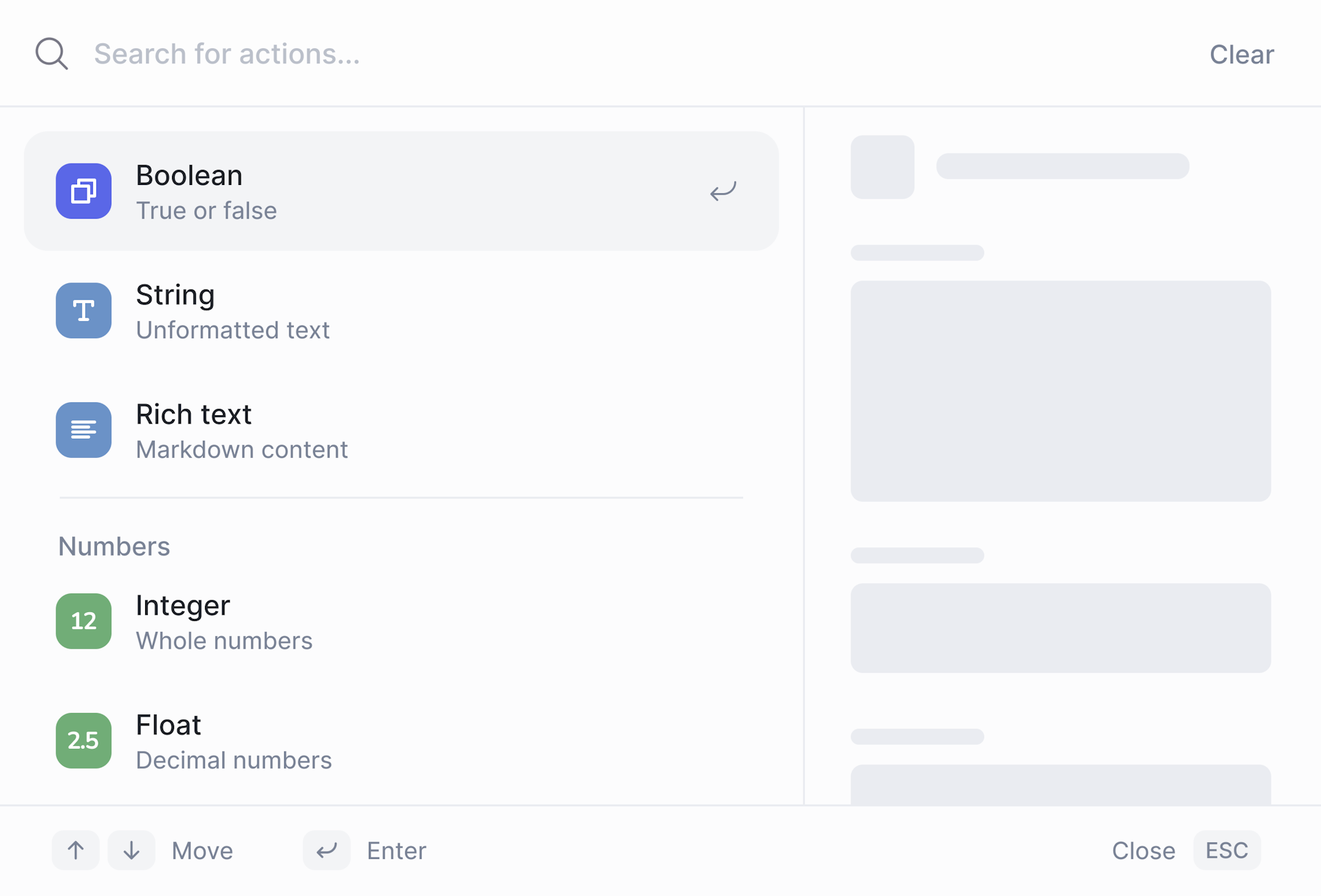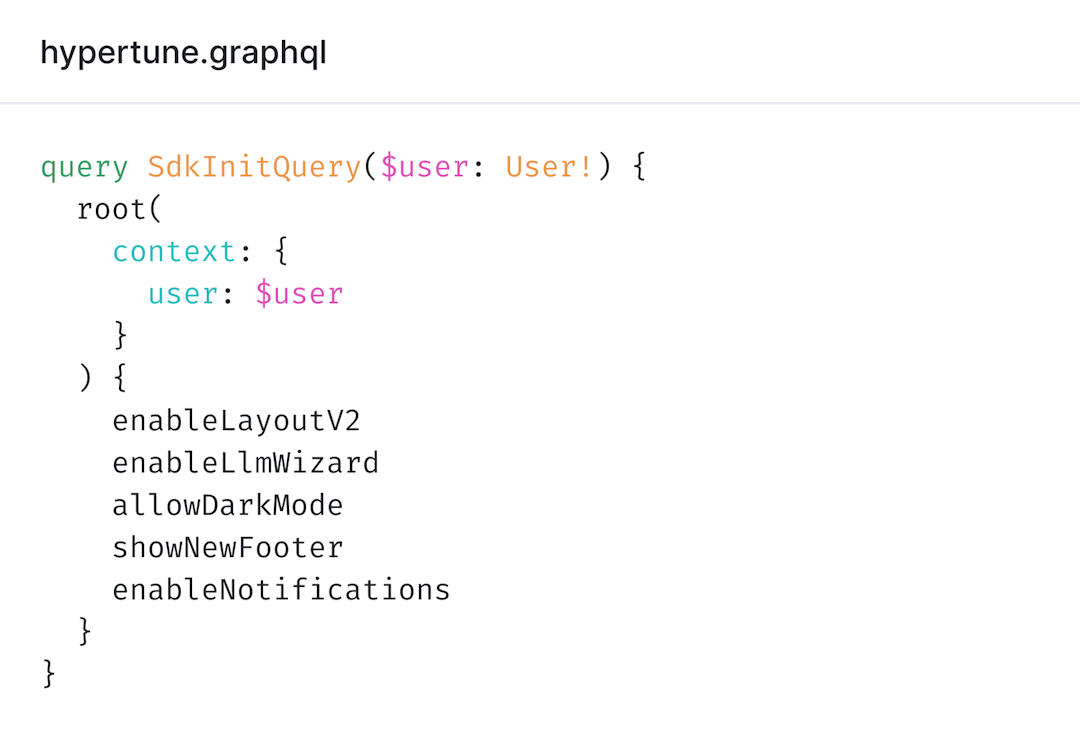Type-safe feature flags
Powerful flags, A/B testing, analytics and app configuration. Optimized for TypeScript, React and Next.js.
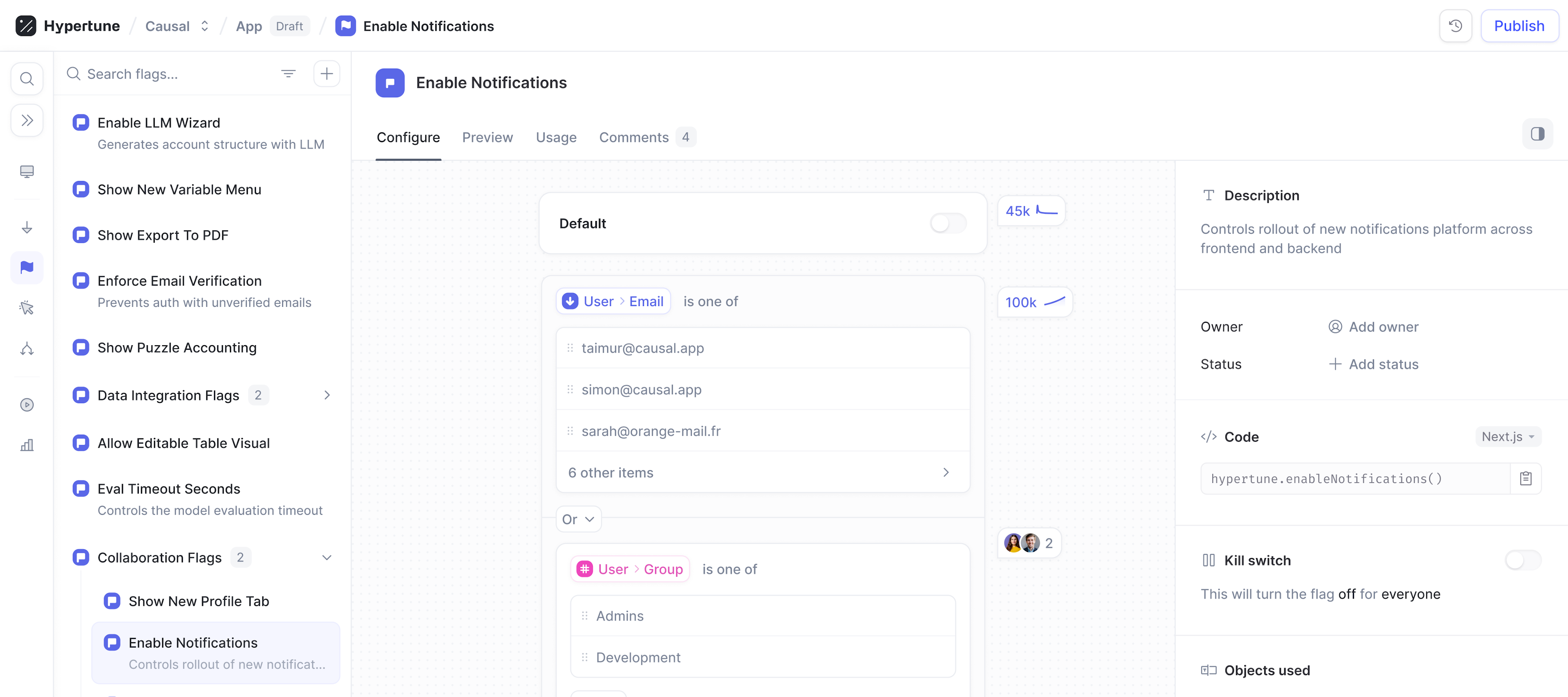
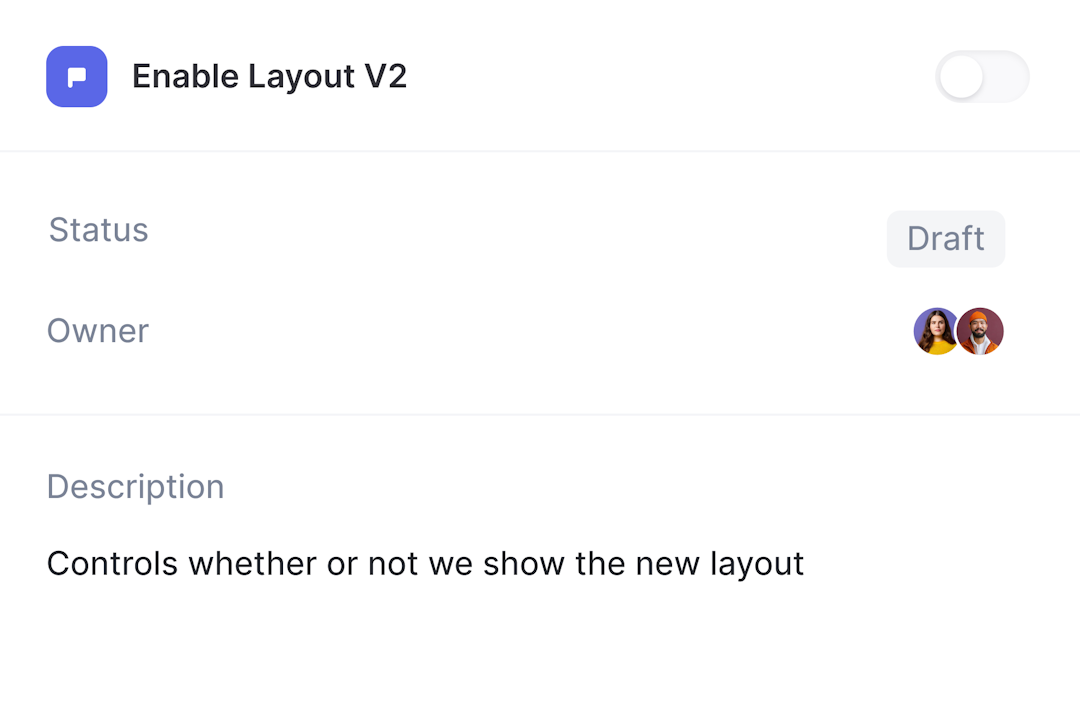
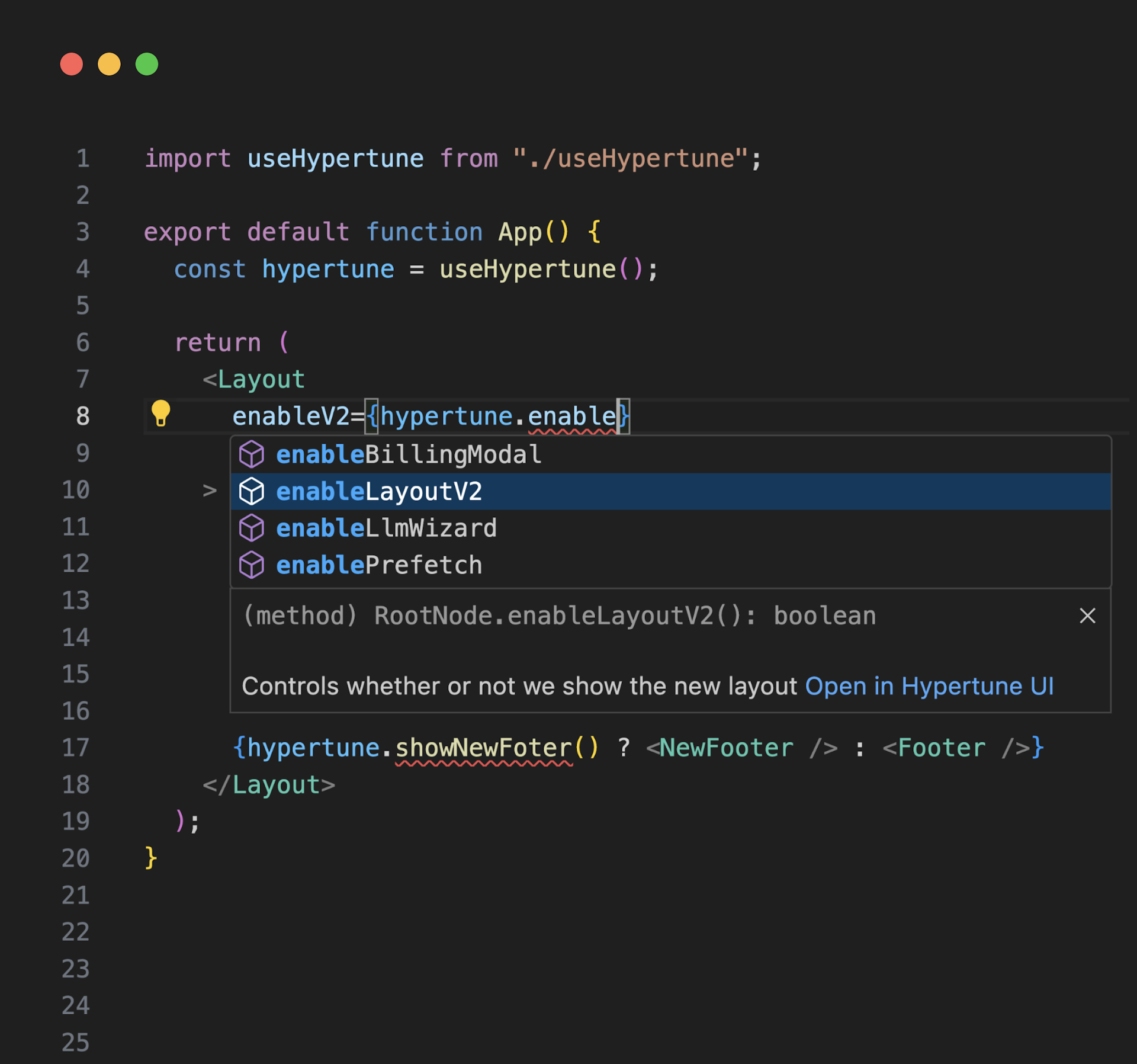
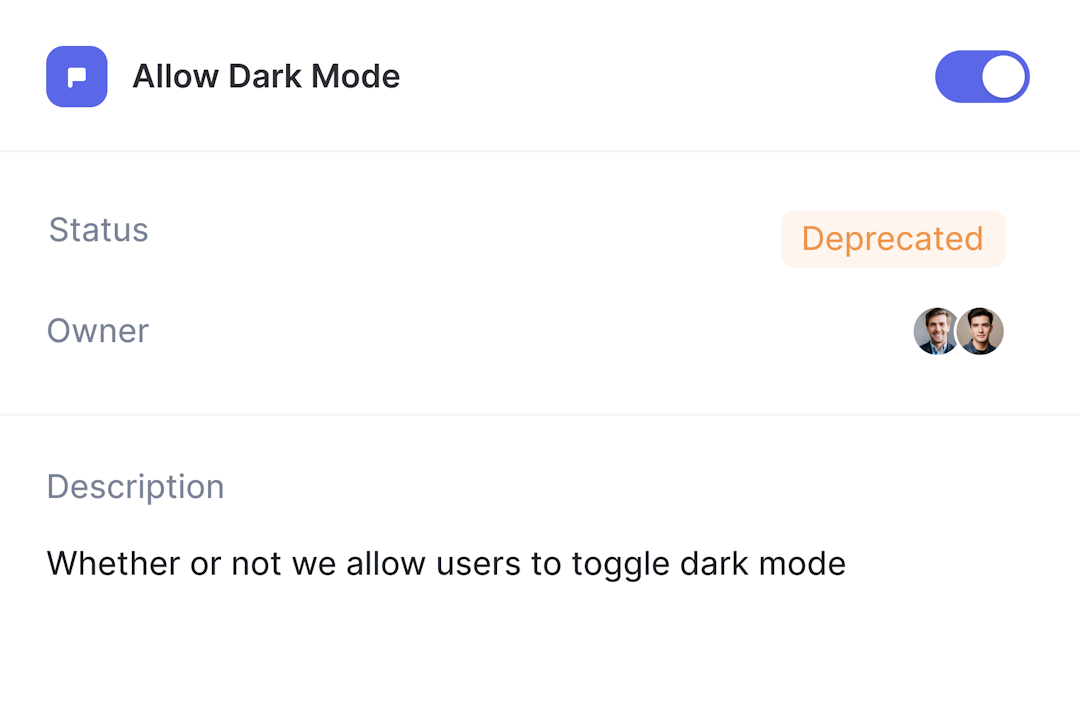
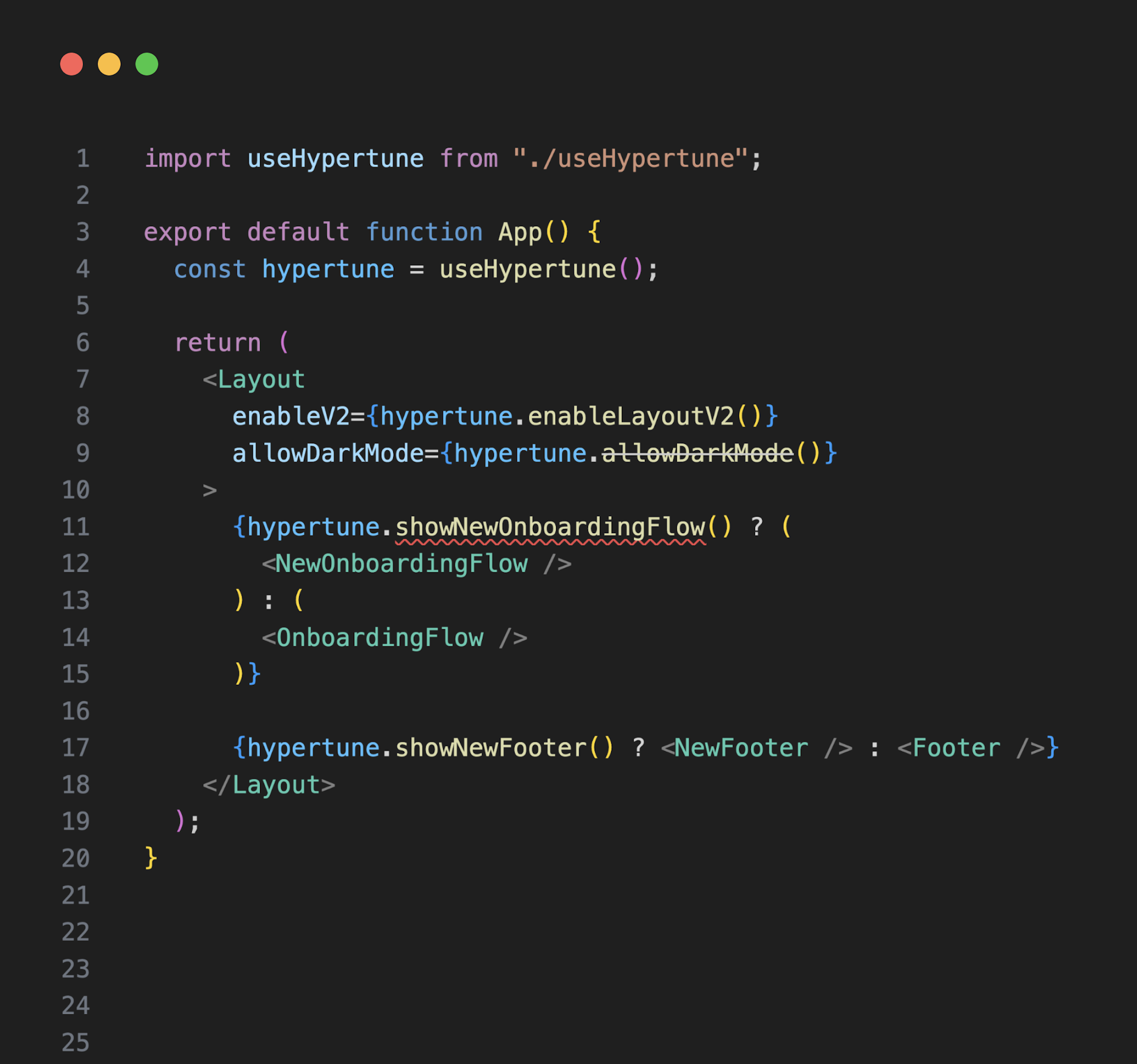
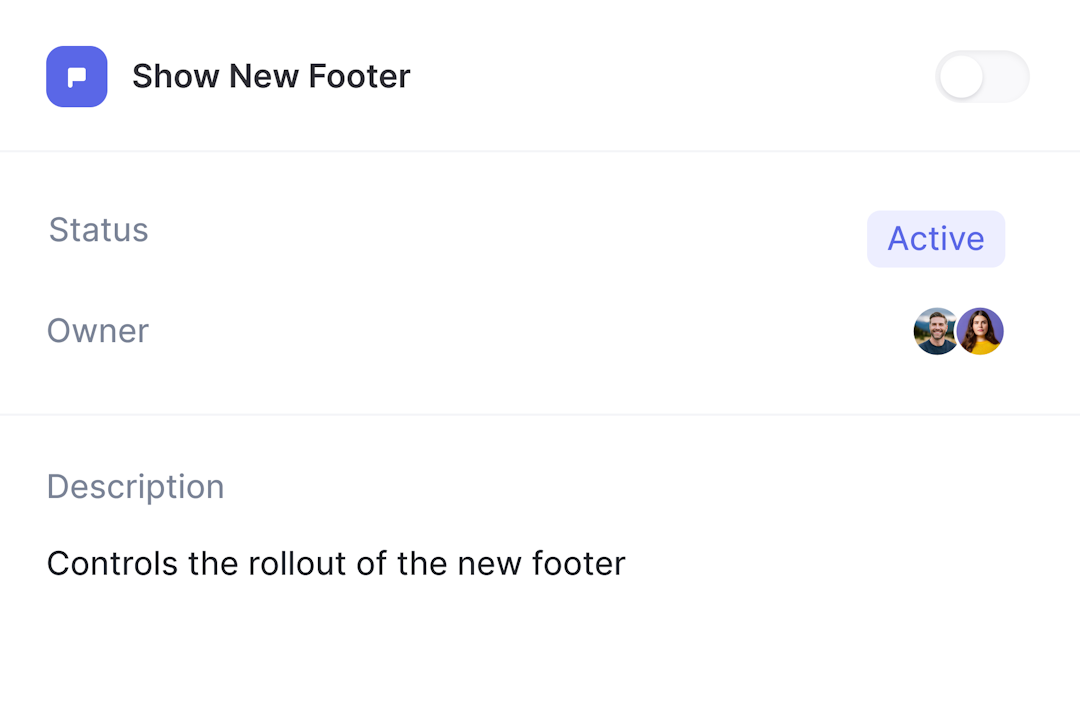
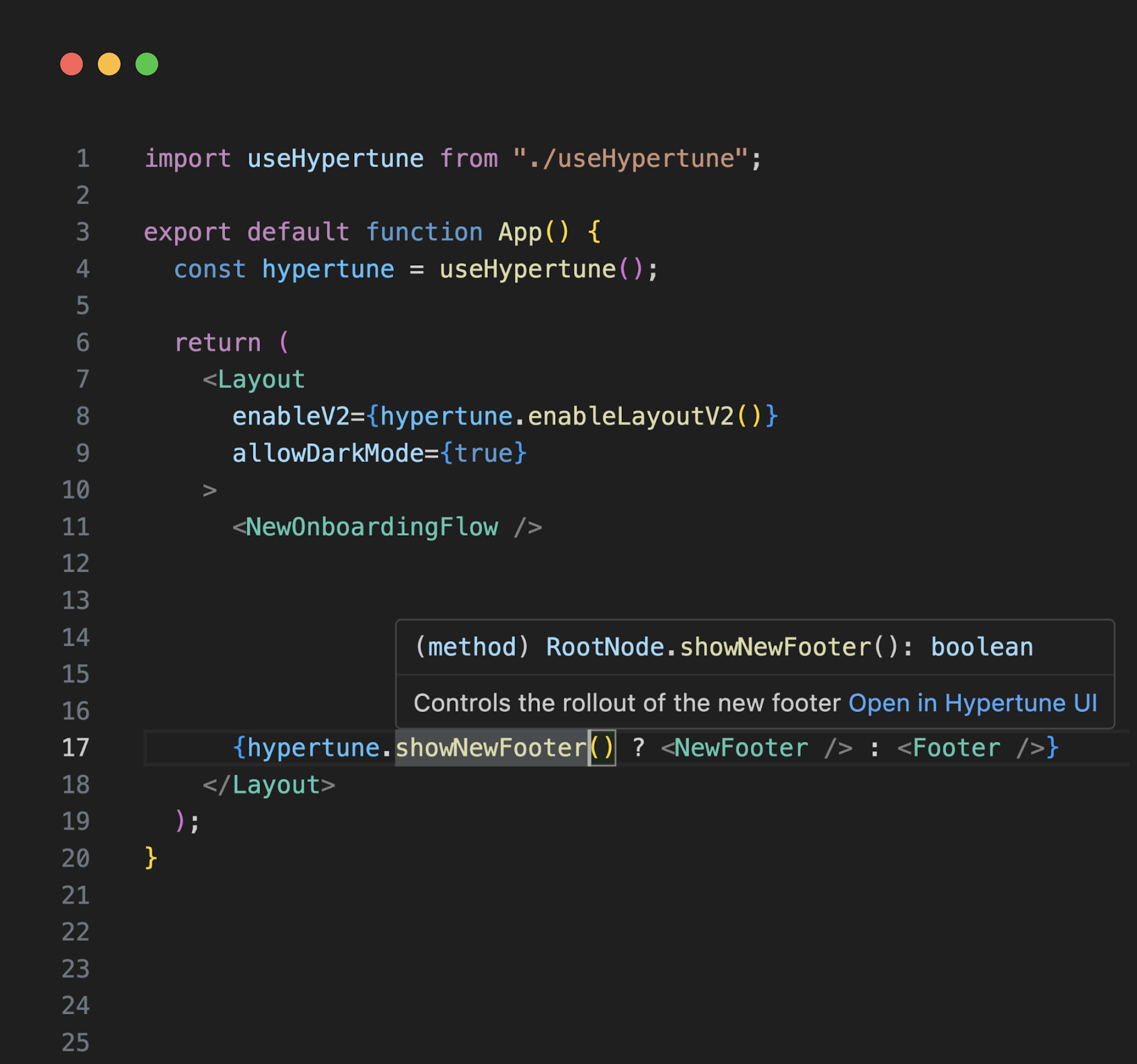
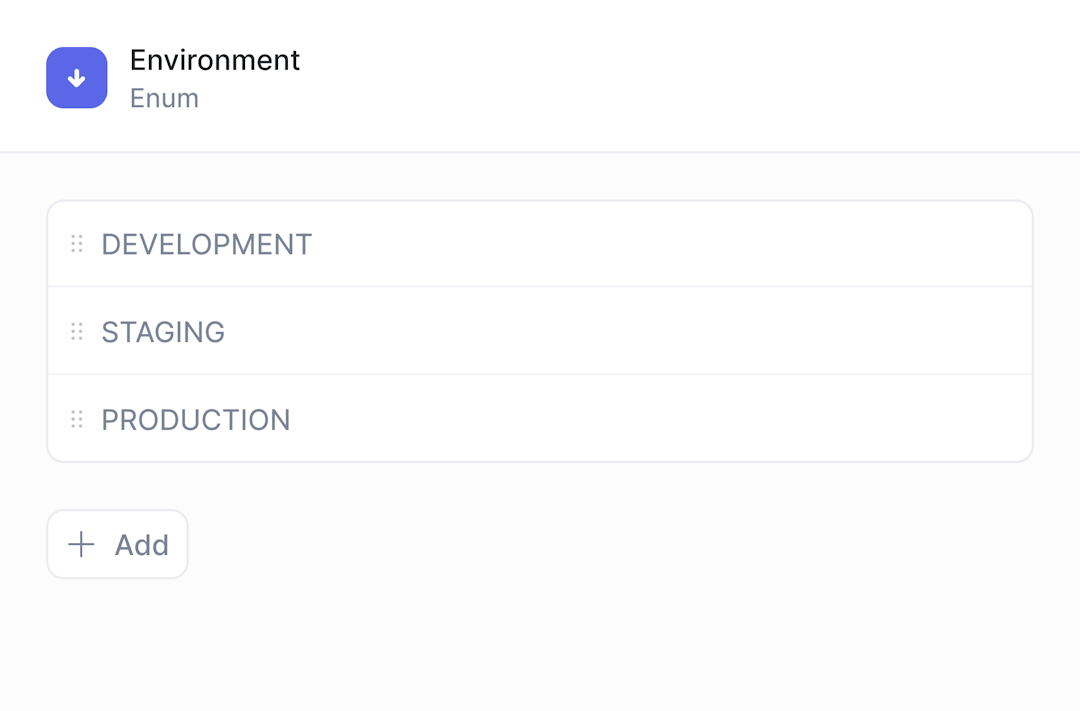
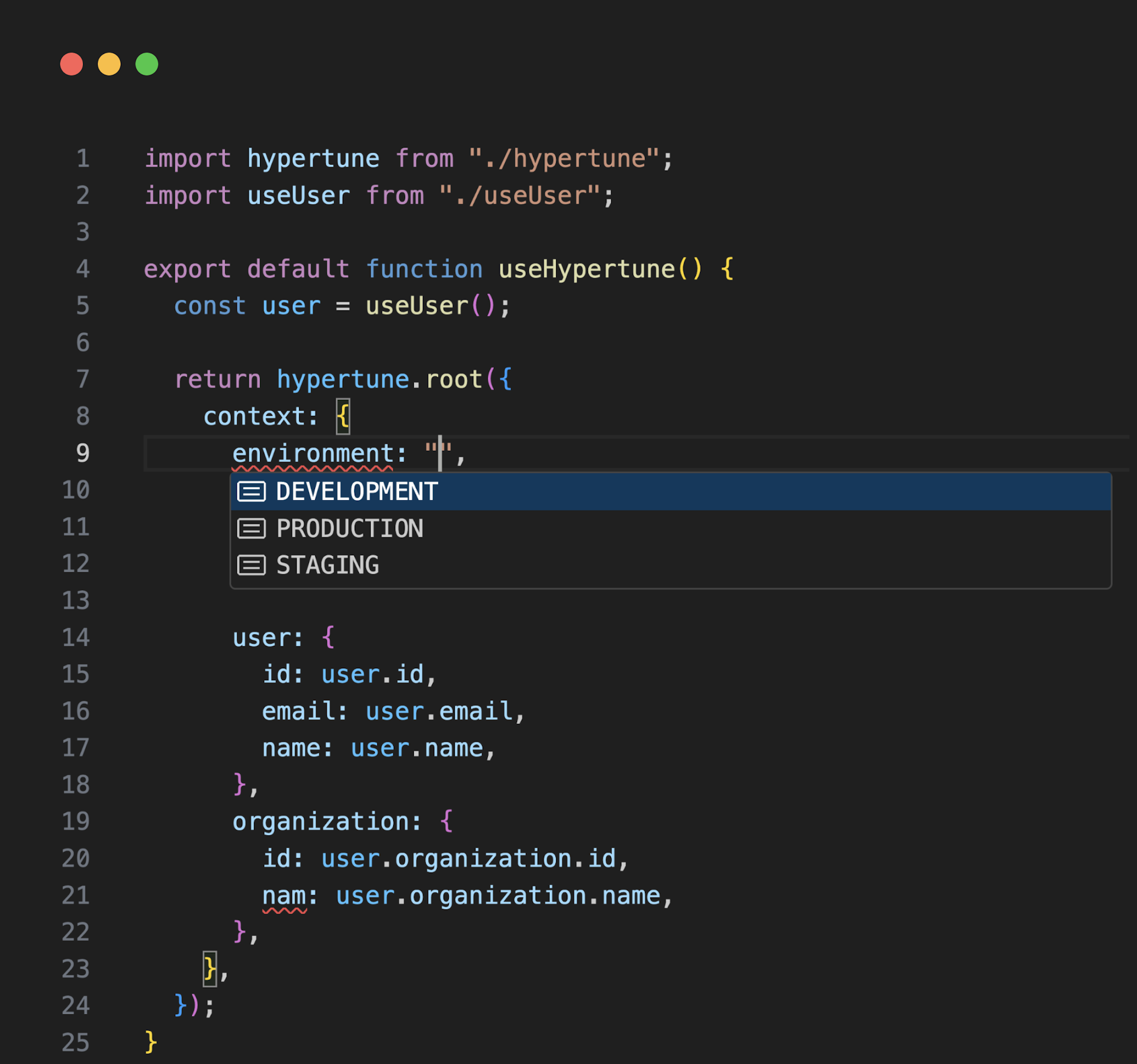
No juggling different SDKs for the frontend, backend and mobile client. Install and set up one TypeScript SDK that works everywhere.
Toggle flags and build targeting rules in Hyperlang, our statically-typed, visual configuration language designed to scale with you

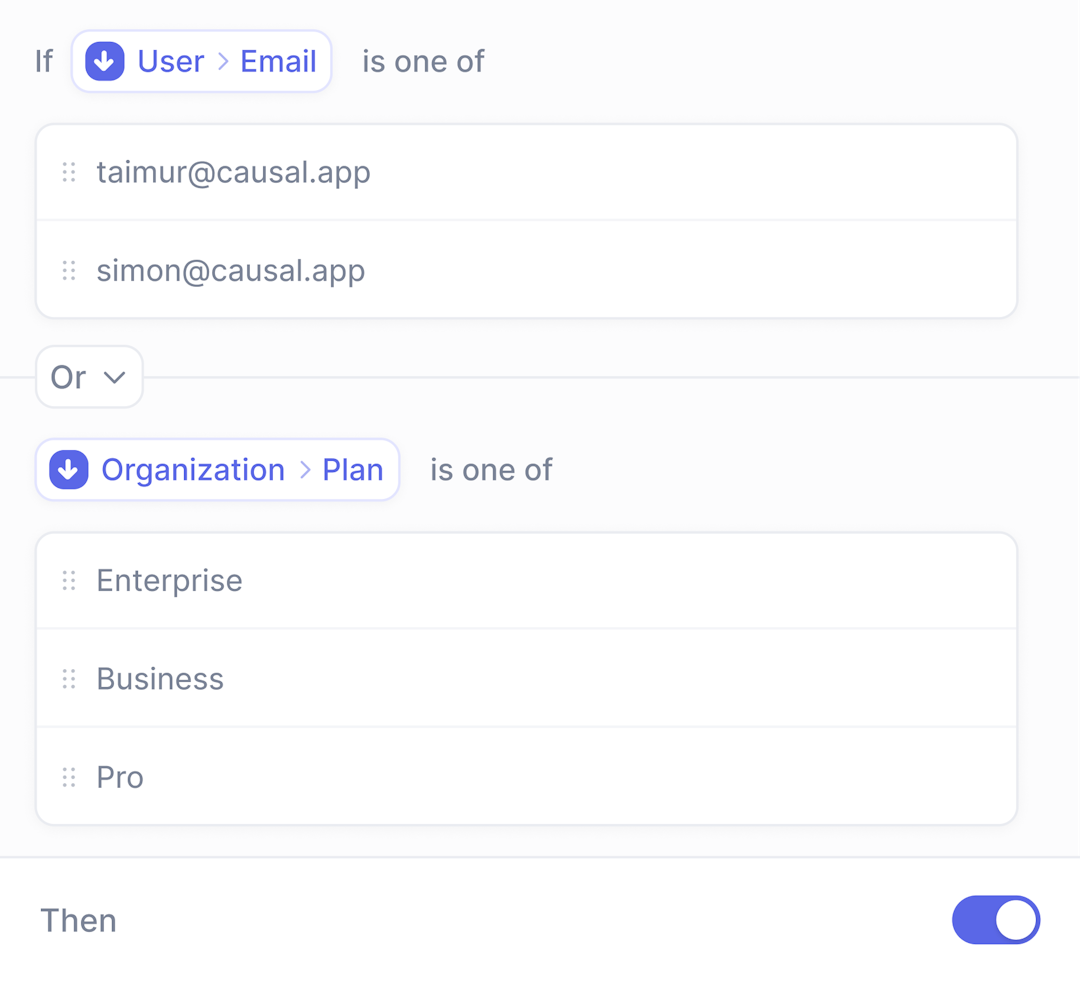
Use custom inputs in your feature flag rules and target exactly the users you want



Use variables to build user segments you can reuse across the rules of different feature flags
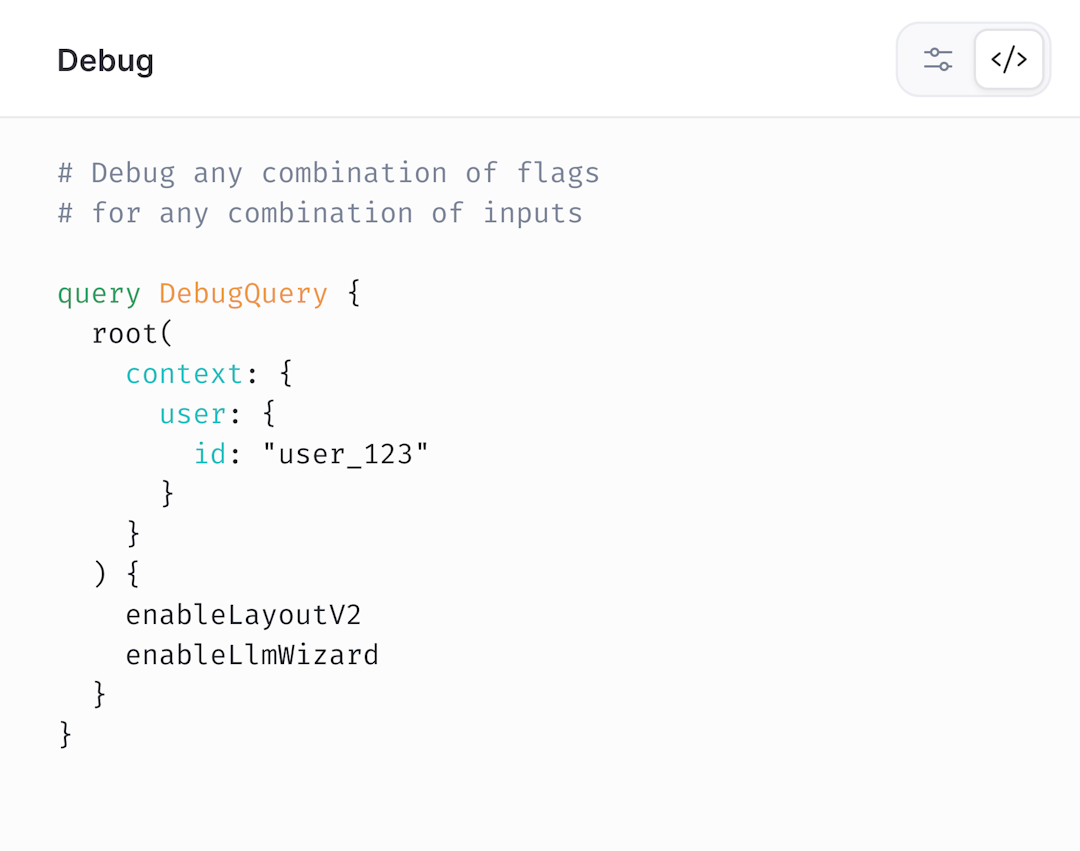
Instantly see what each feature flag evaluates to for a given User, Organization, Environment, etc


See real-time evaluation counts on each branch of your logic

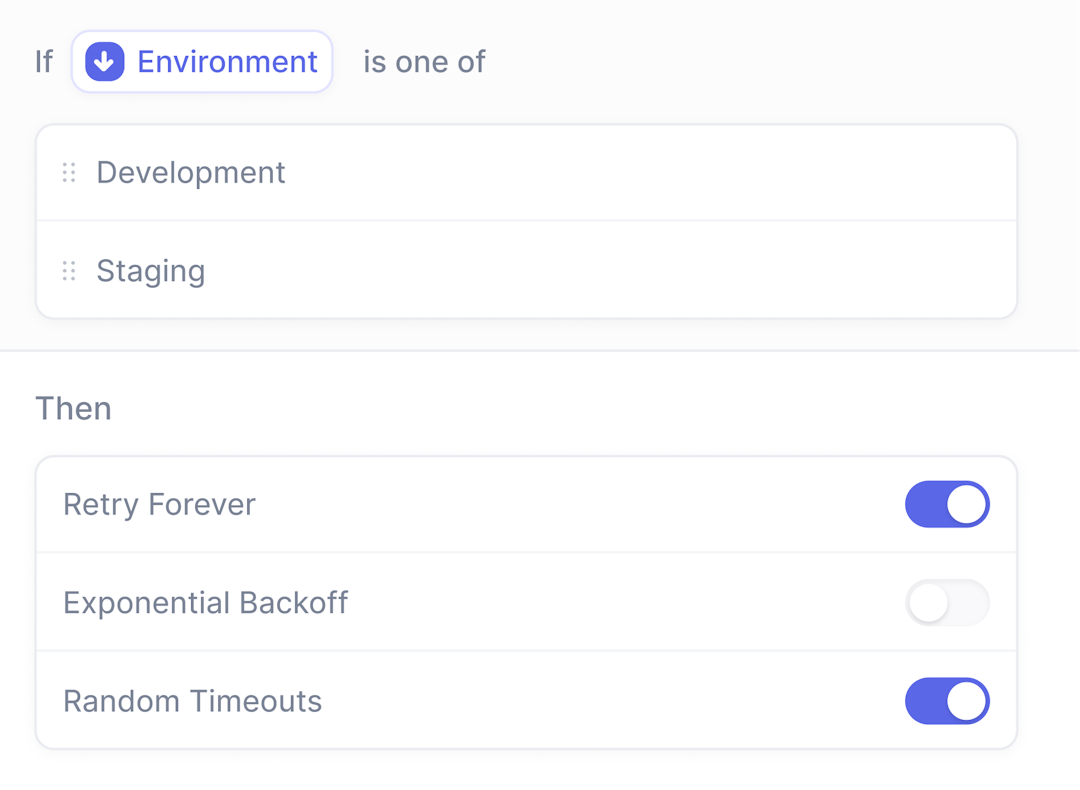
Use enums to manage feature flags with more than two states and use objects to group related flags together
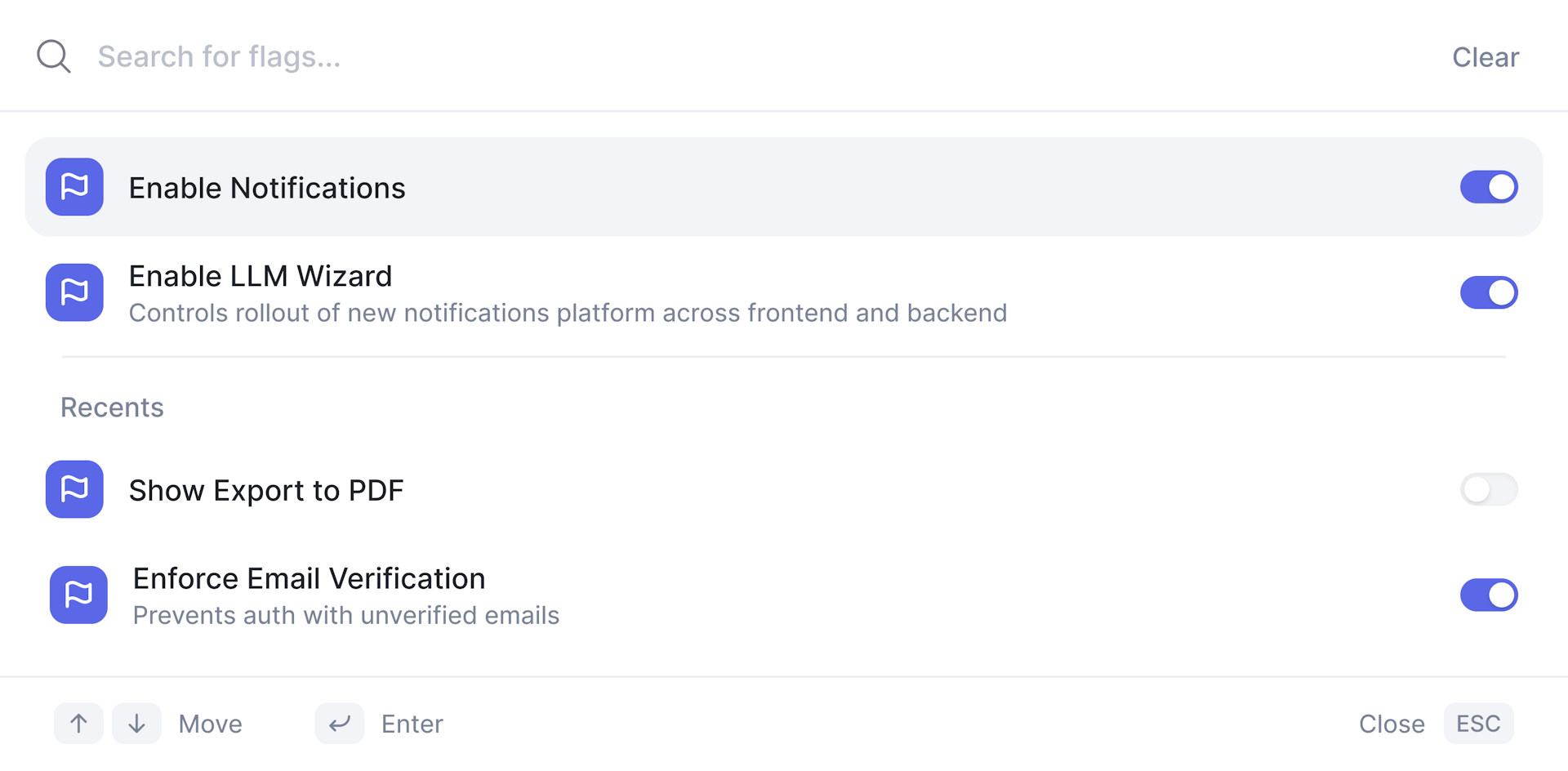

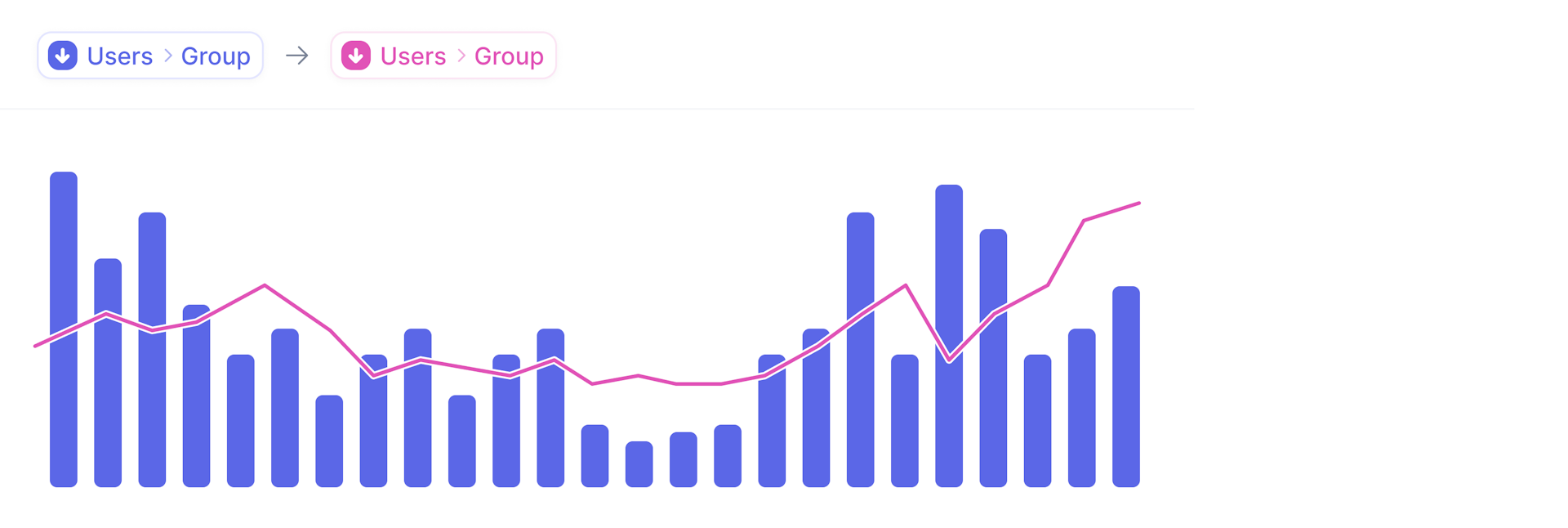
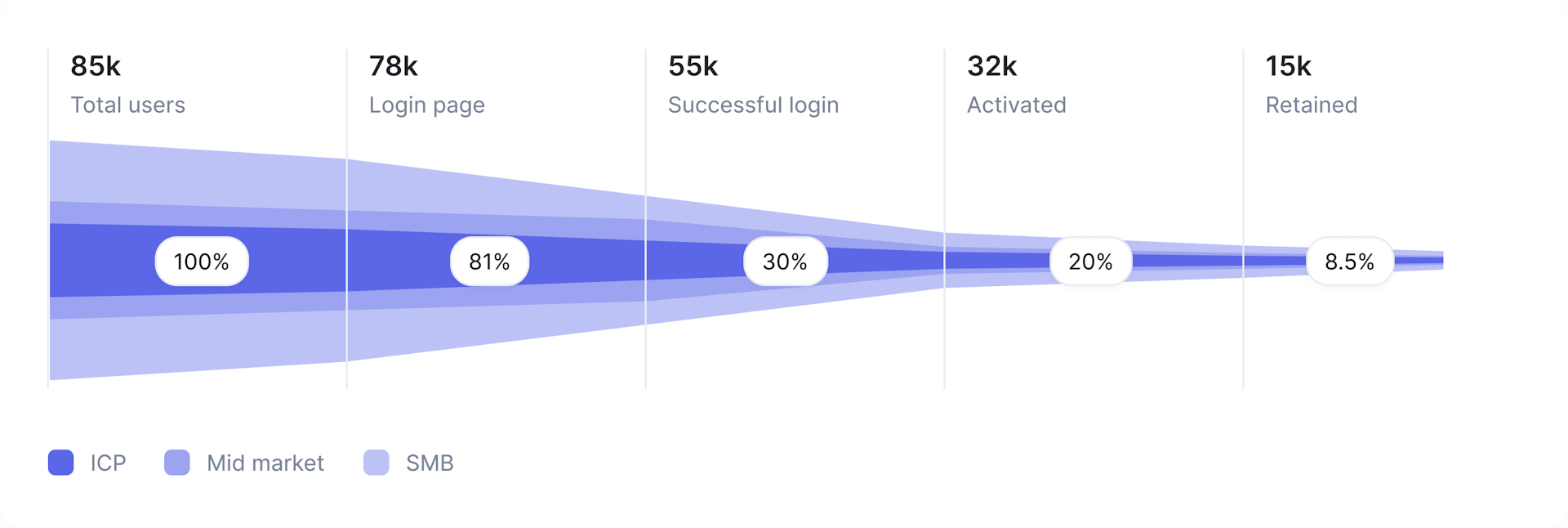
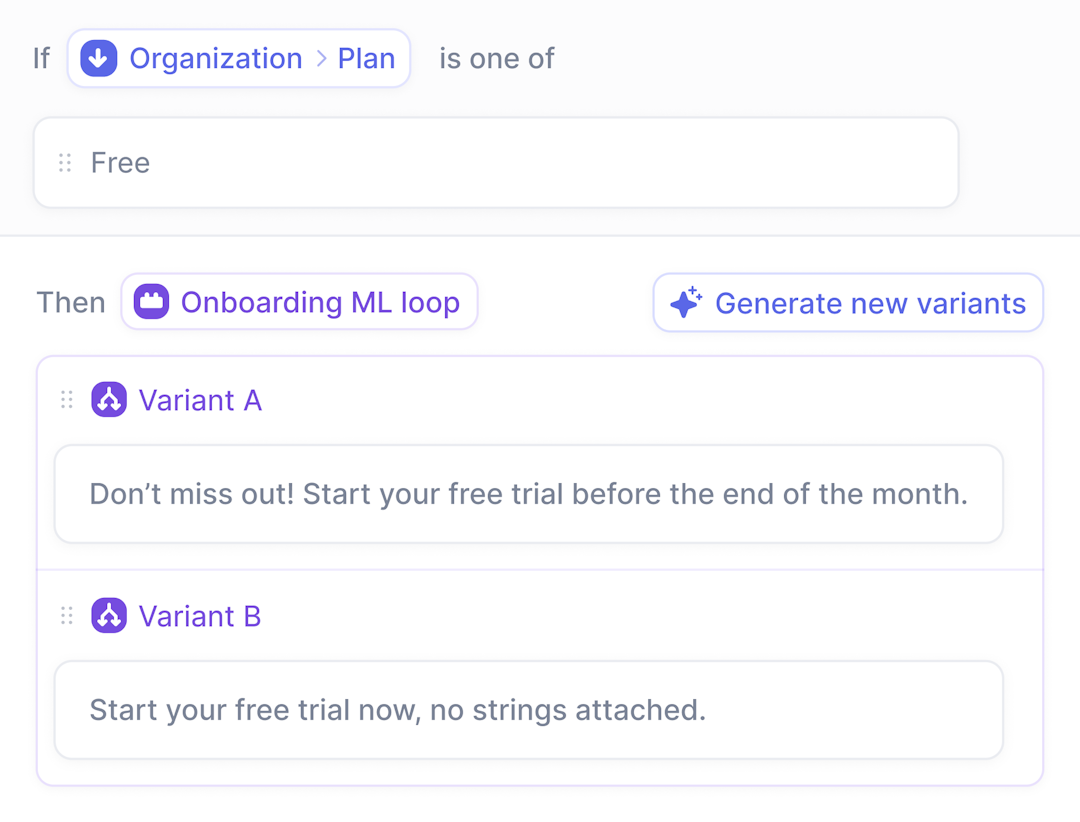
Local flag evaluation with zero network latency means you can use the SDK anywhere without degrading the end-user experience.

